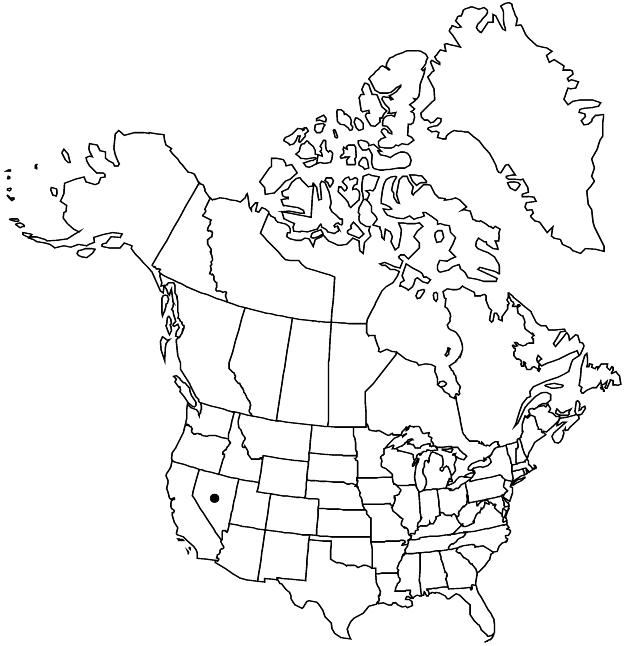familyPolygonaceae
subfamilyPolygonaceae subfam. Eriogonoideae
genusEriogonum
subgenusEriogonum subg. Eucycla
speciesEriogonum rosense
Difference between revisions of "Eriogonum rosense var. beatleyae"
Harvard Pap. Bot. 9: 194. 2004.
Common names: Beatley’s wild buckwheat
Basionym: Eriogonum beatleyae Reveal Aliso 7: 415. 1972
FNA>Volume Importer |
FNA>Volume Importer |
||
| Line 8: | Line 8: | ||
}} | }} | ||
|common_names=Beatley’s wild buckwheat | |common_names=Beatley’s wild buckwheat | ||
| − | |basionyms={{Treatment/ID/ | + | |basionyms={{Treatment/ID/Basionym |
|name=Eriogonum beatleyae | |name=Eriogonum beatleyae | ||
|authority=Reveal | |authority=Reveal | ||
| + | |publication_title=Aliso | ||
| + | |publication_place=7: 415. 1972 | ||
}} | }} | ||
|synonyms= | |synonyms= | ||
| Line 27: | Line 29: | ||
|elevation=1700-2600(-2800) m | |elevation=1700-2600(-2800) m | ||
|distribution=Nev. | |distribution=Nev. | ||
| − | |discussion=<p>Variety beatleyae has yellow flowers in Eureka, Mineral, and Nye counties; in Churchill and adjacent Lander counties it has yellow or cream-colored flowers. Unlike <i></i>var.<i> rosense</i>, <i></i>var.<i> beatleyae</i> is commonly encountered at lower elevations in the foothills of Great Basin ranges and occurs at higher elevations only in the Toiyabe Mountains.</p> | + | |discussion=<p>Variety beatleyae has yellow flowers in Eureka, Mineral, and Nye counties; in Churchill and adjacent Lander counties it has yellow or cream-colored flowers. Unlike <i></i></i>var.<i><i> rosense</i>, <i></i></i>var.<i><i> beatleyae</i> is commonly encountered at lower elevations in the foothills of Great Basin ranges and occurs at higher elevations only in the Toiyabe Mountains.</p> |
|tables= | |tables= | ||
|references= | |references= | ||
| Line 51: | Line 53: | ||
|publication year=2004 | |publication year=2004 | ||
|special status= | |special status= | ||
| − | |source xml=https://jpend@bitbucket.org/aafc-mbb/fna-data-curation.git/src/ | + | |source xml=https://jpend@bitbucket.org/aafc-mbb/fna-data-curation.git/src/f6b125a955440c0872999024f038d74684f65921/coarse_grained_fna_xml/V5/V5_539.xml |
|subfamily=Polygonaceae subfam. Eriogonoideae | |subfamily=Polygonaceae subfam. Eriogonoideae | ||
|genus=Eriogonum | |genus=Eriogonum | ||
Revision as of 21:09, 24 September 2019
Plants 0.4–0.8(–1.3) × 1–5 dm. Leaf blades broadly elliptic to oval, (0.7–)1–2.5 × 0.5–1.6 cm, densely white-tomentose abaxially, greenish-tomentose adaxially. Involucres campanulate, (2.5–)3–5(–6) × 3–5(–6) mm; teeth 5. Flowers (2.5–)3–4 mm; perianth yellow or, infrequently, cream; tepals oblong. Achenes (2.5–)3–3.5 mm.
Phenology: Flowering May–Aug.
Habitat: Volcanic tuffaceous soils, sagebrush communities, pinyon-juniper woodlands
Elevation: 1700-2600(-2800) m
Discussion
Variety beatleyae has yellow flowers in Eureka, Mineral, and Nye counties; in Churchill and adjacent Lander counties it has yellow or cream-colored flowers. Unlike var. rosense, var. beatleyae is commonly encountered at lower elevations in the foothills of Great Basin ranges and occurs at higher elevations only in the Toiyabe Mountains.
Selected References
None.
Lower Taxa
None.
